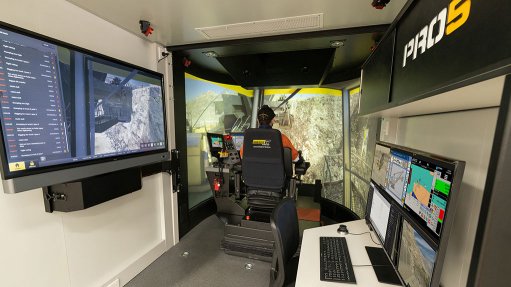Safety Management for Sustainable Behavioural Change: Gamification of Operational Risk Management Processes
This article has been supplied.
By Sian Thurtell, Chief Operating Officer at KBC Health & Safety
In the South African mining industry, few SHEQ training service providers use gamification to facilitate effective and measurable knowledge sharing to build a culture of safety that is strongly linked to Operational Risk Management Processes (ORMP). KBC’s instructional design and innovation teams are tasked with tailoring each programme to the specific needs of the client's mining house or organisation, which will enhance their philosophy of ORMP. Our comprehensive approach integrates technical and behavioural aspects to ensure that every employee and contractor comprehends the change required in working habits and is motivated to adopt these ORMP practices. The outcome is an interactive and captivating training curriculum that integrates experiential training, gamification, role-playing, and virtual reality, which enables the learner to transfer the behaviours learnt in the classroom, into the workplace.
Practical knowledge-sharing
Gamification is a powerful learning methodology because traditional training modules in classroom settings are not as helpful as they could be in teaching the skills necessary for certain critical-impact situations. A benefit of gamification is increased participation and, to build and maintain a team culture of safety through the acquisition of new skills, has proven to be one of the most effective methods in safety training. KBC has experienced that the game of soccer is a successful gamification tool. Soccer resonates deeply with the majority of mining employees, as they can relate to the sport and admire its icons. Training providers can share personal anecdotes from renowned soccer stars that are relevant to ORMP that can be applied in workplace scenarios. Classroom sessions are followed by the learners going out onto the field to play a game of soccer which offers an interactive environment for learners to transfer their newly acquired theoretical skills and concepts into real-world applications.
The Role of Metrics in Gamification Success
Given that such training programmes are a significant investment, both from a financial and time perspective, it is critical that KBC can track and show a clear return on investment (ROI). We measure the overall learning experience and impact of gamification using a four-tiered evaluation model. Using this model, it is possible to assess the learners' reaction to the gamification experience, the acquisition of knowledge and skills, the application of these skills to real-life scenarios, and the overall impact of gamification on the organisation.
Learner evaluation
Learning must be measured through formative assessments, activities, and role-play to determine understanding and comprehension of the content presented to them. In experiential training, it is also important to evaluate how well the gamification strategy captures and maintains learner attention, how relevant the content is to their needs, how confident they feel about applying their knowledge and skills, and how satisfied they are with the overall gamification experience.
Addressing knowledge gaps
One of the most pertinent steps in quantifying how gamified training has impacted an individual is to identify whether there has been a change in behaviour. To this end, KBC recommends the appointment of some of the organisation’s employees as Safety Performance Coaches (SPCs), to monitor working practices and engage with other workers to address unsafe behaviours on-site. The SPCs submit structured reports to management and the training facilitators, making it easier to assess the effectiveness of newly acquired skills and identify and correct gaps in the application of ORMP.
Defining KPIs that lead to results
In the mining industry, organisational objectives usually revolve around on-site safety, as mining businesses usually prioritise zero harm and zero fatalities. Although achieving complete zero harm may be challenging in high-risk environments, it is always the goal. In addition, cultural change, improved production, and a decrease in the number of safety-related incidents are common ORMP objectives. Defining the Key Performance Indicators (KPIs) that must be achieved through the gamified learning intervention, which align to the organisation’s unique objectives is critical to the effective implementation of such a learning solution.
Comments
Press Office
Announcements
What's On
Subscribe to improve your user experience...
Option 1 (equivalent of R125 a month):
Receive a weekly copy of Creamer Media's Engineering News & Mining Weekly magazine
(print copy for those in South Africa and e-magazine for those outside of South Africa)
Receive daily email newsletters
Access to full search results
Access archive of magazine back copies
Access to Projects in Progress
Access to ONE Research Report of your choice in PDF format
Option 2 (equivalent of R375 a month):
All benefits from Option 1
PLUS
Access to Creamer Media's Research Channel Africa for ALL Research Reports, in PDF format, on various industrial and mining sectors
including Electricity; Water; Energy Transition; Hydrogen; Roads, Rail and Ports; Coal; Gold; Platinum; Battery Metals; etc.
Already a subscriber?
Forgotten your password?
Receive weekly copy of Creamer Media's Engineering News & Mining Weekly magazine (print copy for those in South Africa and e-magazine for those outside of South Africa)
➕
Recieve daily email newsletters
➕
Access to full search results
➕
Access archive of magazine back copies
➕
Access to Projects in Progress
➕
Access to ONE Research Report of your choice in PDF format
RESEARCH CHANNEL AFRICA
R4500 (equivalent of R375 a month)
SUBSCRIBEAll benefits from Option 1
➕
Access to Creamer Media's Research Channel Africa for ALL Research Reports on various industrial and mining sectors, in PDF format, including on:
Electricity
➕
Water
➕
Energy Transition
➕
Hydrogen
➕
Roads, Rail and Ports
➕
Coal
➕
Gold
➕
Platinum
➕
Battery Metals
➕
etc.
Receive all benefits from Option 1 or Option 2 delivered to numerous people at your company
➕
Multiple User names and Passwords for simultaneous log-ins
➕
Intranet integration access to all in your organisation





















